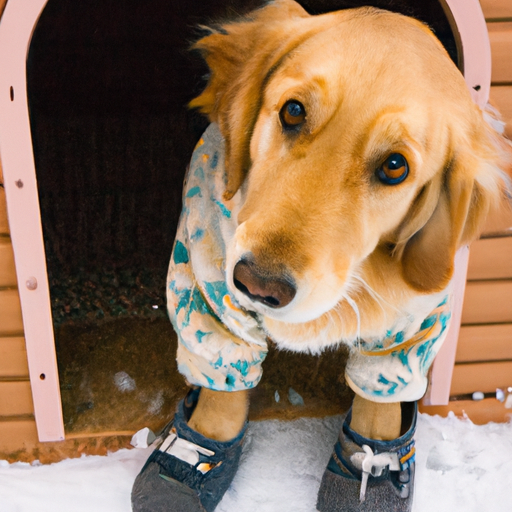Understanding the Needs of Your Dog in Winter
Winter can be a challenging time for our beloved four-legged friends, especially those who spend most of their time outdoors. As caregivers, it’s our responsibility to ensure that they are comfortable and protected from the harsh elements of winter.
-
Breeds: Not all dogs are built for the cold. Some breeds have thick coats that naturally provide more warmth. Understanding your dog’s breed can help you prepare for their winter needs.
-
Age and Health: Young puppies, older dogs, and dogs with health issues are more susceptible to cold weather. Extra precautions should be taken for these dogs.
-
Activity Level: Dogs that are more active may generate more body heat, but they can also lose more heat through exertion.
The Essentials of Keeping Your Dog Warm
There are several ways you can ensure your dog stays warm and comfortable during the winter months.
-
Insulated Dog House: An insulated dog house is a great way to provide your dog with a warm shelter. Make sure it’s large enough for your dog to move around but small enough to retain body heat.
-
Heated Mats and Beds: These are specially designed to provide warmth for outdoor dogs. Always follow the manufacturer’s instructions to avoid any safety hazards.
-
Dog Clothing: Dog sweaters and coats can provide an extra layer of warmth for your dog, especially during walks or playtime.
Optimal Diet and Hydration for Cold Weather
Winter weather can affect your dog’s diet and hydration needs.
| Winter Need | Suggestion |
|---|---|
| Diet | Increase calorie intake to help generate more body heat. Consult your vet for the best diet plan. |
| Hydration | Ensure fresh, unfrozen water is always available. Heated water bowls can be beneficial. |
Regular Vet Check-ups
Regular vet check-ups are essential to ensure your dog is healthy and ready for winter. Your vet can provide advice tailored to your dog’s specific needs.
Safeguarding Your Dog from Winter Hazards
Winter brings not only cold but also other potential hazards for your dog.
-
Antifreeze: This commonly used winter product is lethal for dogs. Ensure it’s stored safely and clean up any spills immediately.
-
Ice and Snow: These can lead to frostbite and injuries. Make sure to check and clean your dog’s paws after they’ve been outside.
FAQ
Q: How cold is too cold for my dog?
A: It varies by breed, age, and health. Generally, temperatures below freezing are potentially hazardous.
Q: Is it cruel to keep a dog outside in winter?
A: Not if adequate measures are taken to keep the dog warm, fed, and hydrated. Always ensure a warm shelter is available.
Q: Can dogs get frostbite?
A: Yes, dogs can get frostbite, especially on their ears, tail, and paws. If you suspect frostbite, seek immediate veterinary care.
Remember, as caregivers, it’s our responsibility to provide a safe and comfortable environment for our dogs. Winter can be a fun time for your dog if you take the necessary precautions to keep them warm and protected.



